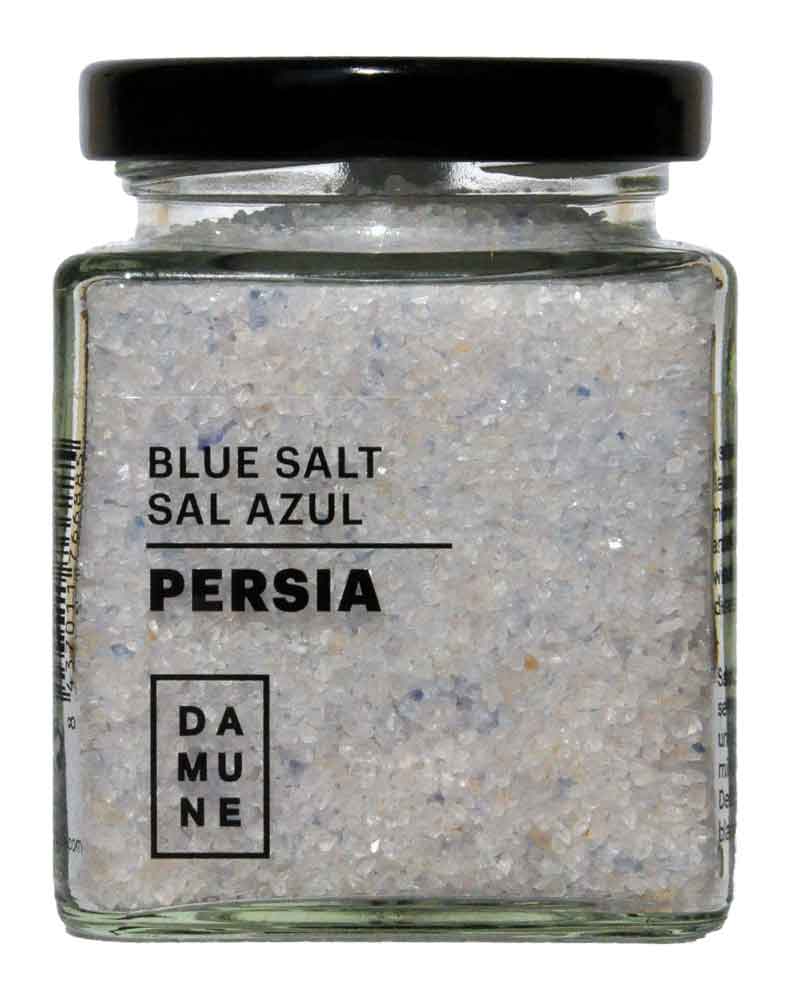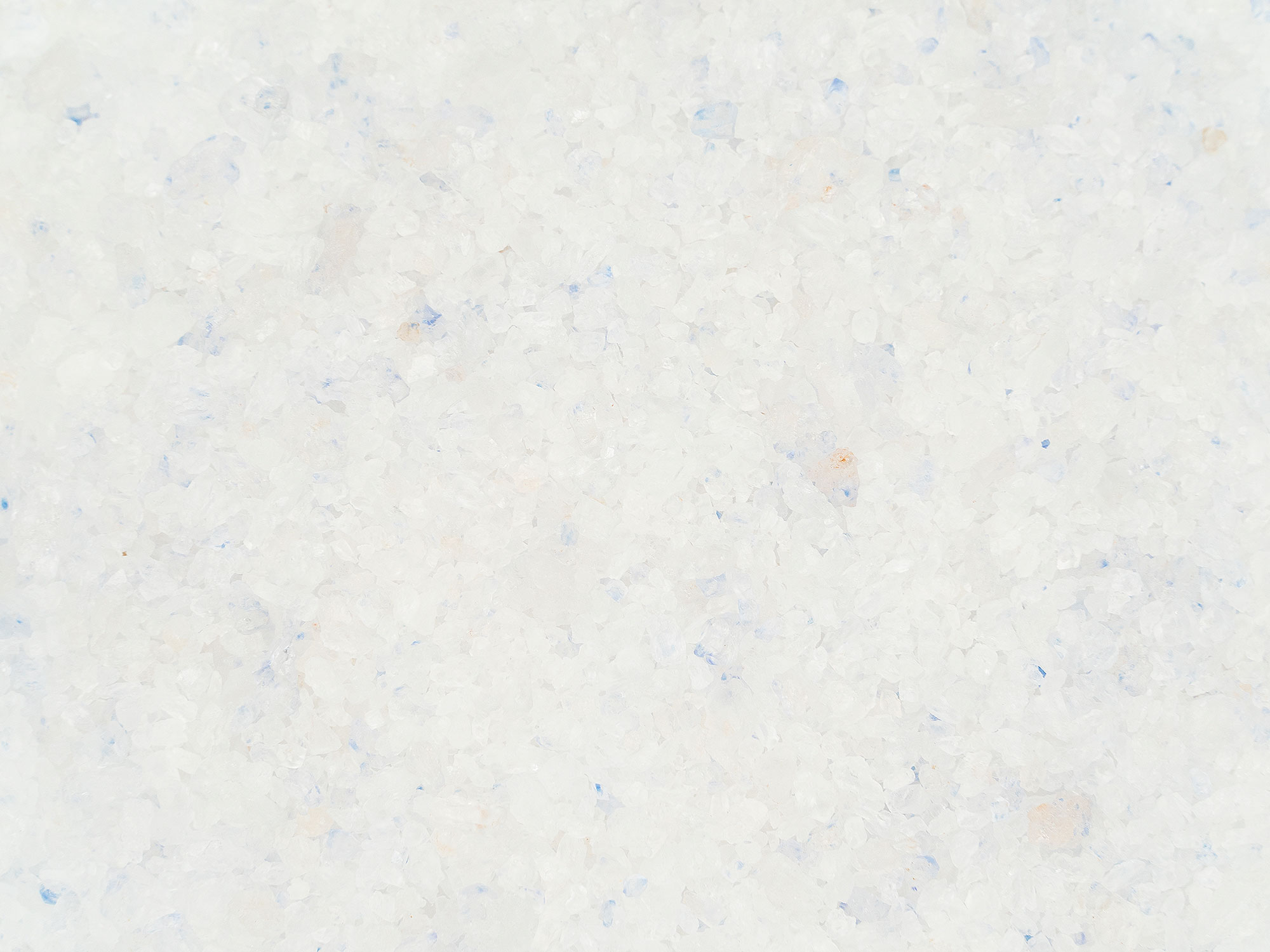Sal Azul: The Blue Salt That's Taking The World By Storm
Imagine a world where salt isn't just white, but comes in a vibrant blue hue. Welcome to the fascinating world of sal azul, the blue salt that's creating waves across the globe. This unique salt isn't just a culinary curiosity; it's a game-changer in the world of gourmet cooking and natural health remedies. But what exactly is sal azul, and why is everyone talking about it? Let's dive in and uncover the secrets behind this mysterious blue salt.
Sal azul might sound like something out of a sci-fi novel, but it's very much real. This blue salt has been around for centuries, but it's only recently that it's gained popularity in the culinary world. Chefs and health enthusiasts alike are raving about its unique properties and the way it elevates dishes to a whole new level. But before we get into all the hype, let's first understand what makes sal azul so special.
In today's fast-paced world, people are constantly looking for ways to enhance their culinary experiences while staying true to natural ingredients. Sal azul offers a perfect blend of tradition and innovation, making it a favorite among those who value authenticity in their food. So, if you're ready to explore the world of blue salt, you're in for a treat!
Read also:Secure Remote Access With Remoteiot Ssh A Comprehensive Guide
What is Sal Azul?
Sal azul, or blue salt, is a natural sea salt that gets its distinctive color from the minerals it contains. Unlike regular table salt, sal azul is harvested from specific regions where the mineral composition of the water gives it its unique blue tint. This salt is not only visually striking but also packed with essential nutrients that make it a healthier alternative to traditional salts.
Where Does Sal Azul Come From?
Sal azul is primarily found in coastal regions with specific geological conditions. The most famous source of sal azul is the coastal areas of Peru, where the mineral-rich waters create the perfect environment for this blue salt to form. These regions are known for their pristine beaches and crystal-clear waters, which contribute to the high quality of the salt produced there.
Health Benefits of Sal Azul
One of the main reasons sal azul has become so popular is its health benefits. Unlike regular table salt, which can be high in sodium and low in nutrients, sal azul is rich in essential minerals like magnesium, potassium, and calcium. These minerals not only enhance the flavor of your food but also provide numerous health benefits.
- Rich in essential minerals that support overall health
- Helps regulate blood pressure due to its lower sodium content
- Boosts energy levels and supports muscle function
- Improves digestion and promotes gut health
How to Use Sal Azul in Cooking
Using sal azul in your cooking is easier than you might think. Whether you're a professional chef or a home cook, this blue salt can add a unique twist to your dishes. Its mild flavor and beautiful color make it a perfect finishing salt for a variety of dishes, from salads to desserts.
Best Recipes with Sal Azul
Here are a few ideas to get you started:
- Blue Salt Caramel: Add a pinch of sal azul to your caramel for a beautiful blue hue and a hint of mineral flavor.
- Salad Topping: Sprinkle sal azul over your favorite salad for an elegant and flavorful finishing touch.
- Seafood Dishes: Enhance the natural flavors of seafood with a dash of sal azul, which complements the oceanic taste perfectly.
Sal Azul vs Regular Salt
When comparing sal azul to regular salt, the differences are quite striking. Regular table salt is often highly processed, stripping it of its natural minerals and leaving behind mostly sodium chloride. Sal azul, on the other hand, is minimally processed and retains its natural mineral content, making it a healthier and more flavorful option.
Read also:Ballistics And Document Analysis Crossword The Ultimate Guide For Puzzle Enthusiasts
Key Differences
- Color: Sal azul has a distinctive blue tint, while regular salt is white.
- Mineral Content: Sal azul is rich in essential minerals, whereas regular salt is mostly sodium chloride.
- Flavor: Sal azul has a milder, more complex flavor profile compared to the sharp taste of regular salt.
The Environmental Impact of Sal Azul
As more people become conscious of the environmental impact of their food choices, it's important to consider the sustainability of sal azul. Fortunately, this blue salt is harvested using traditional methods that have a minimal impact on the environment. The regions where sal azul is produced are often protected, ensuring that the natural ecosystems remain intact.
Sustainable Practices
Many sal azul producers adhere to sustainable practices, such as:
- Using solar energy to evaporate the saltwater
- Minimizing waste during the harvesting process
- Supporting local communities through fair trade practices
Where to Buy Sal Azul
Sal azul might not be as widely available as regular salt, but it's becoming easier to find as its popularity grows. You can purchase sal azul from specialty food stores, gourmet markets, and online retailers. When buying sal azul, look for reputable brands that ensure the quality and authenticity of the product.
Tips for Buying Sal Azul
- Check for certifications that guarantee the salt's origin and quality.
- Buy in small quantities to ensure freshness.
- Store sal azul in an airtight container to preserve its color and flavor.
Sal Azul in Global Cuisine
Sal azul isn't just a local phenomenon; it's making waves in global cuisine. Chefs around the world are incorporating this blue salt into their dishes, creating stunning presentations and unique flavor profiles. From Michelin-starred restaurants to local eateries, sal azul is becoming a staple in the culinary world.
Cultural Significance
In many cultures, salt has played an important role throughout history. Sal azul continues this tradition, bringing a modern twist to ancient practices. Its vibrant color and unique properties make it a symbol of innovation and tradition in the culinary arts.
Common Misconceptions About Sal Azul
With any new trend, there are bound to be misconceptions. Here are a few common myths about sal azul:
- Myth: Sal azul is artificially colored. Fact: The blue color comes from natural minerals in the salt.
- Myth: Sal azul is too expensive for everyday use. Fact: While it may be pricier than regular salt, a little goes a long way, making it a worthwhile investment.
- Myth: Sal azul is only for gourmet dishes. Fact: It can be used in a variety of everyday recipes to enhance flavor and nutrition.
Conclusion
Sal azul is more than just a blue salt; it's a culinary marvel that's changing the way we think about salt. With its unique color, rich mineral content, and health benefits, sal azul offers something for everyone. Whether you're a health-conscious individual or a foodie looking to elevate your dishes, sal azul is definitely worth trying.
So, why not give it a shot? Try incorporating sal azul into your cooking and see the difference it makes. And don't forget to share your experiences with us in the comments below. Who knows? You might just discover a new favorite ingredient!
Table of Contents:
- What is Sal Azul?
- Where Does Sal Azul Come From?
- Health Benefits of Sal Azul
- How to Use Sal Azul in Cooking
- Sal Azul vs Regular Salt
- The Environmental Impact of Sal Azul
- Where to Buy Sal Azul
- Sal Azul in Global Cuisine
- Common Misconceptions About Sal Azul
- Conclusion


